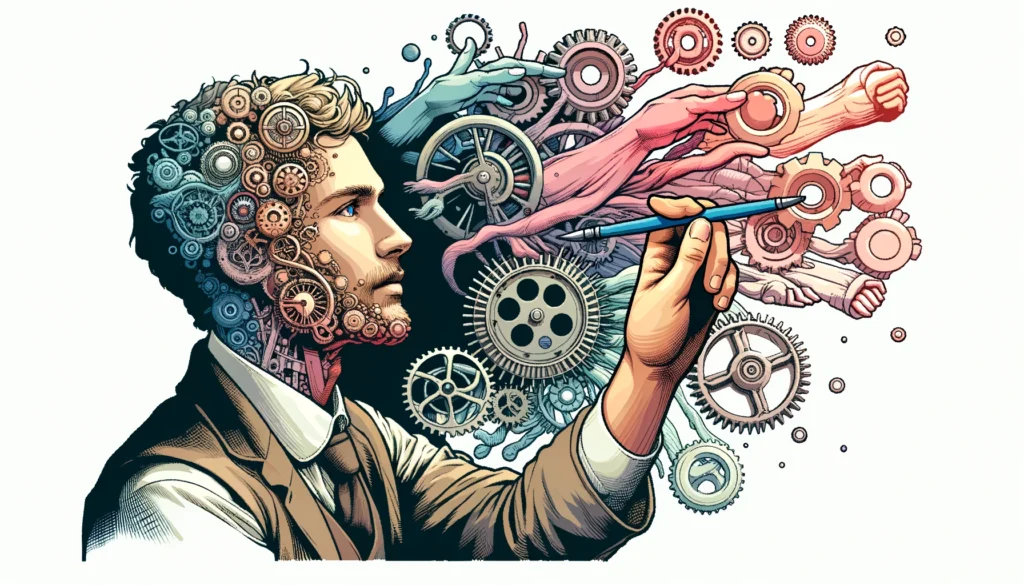
The world of video creation is undergoing a seismic shift with the advent of text-to-video AI. This technology is poised to revolutionize how we create, edit, and consume video content, offering unprecedented possibilities for various industries. Let’s delve into the intricacies of this transformative tool, its applications, benefits, challenges, and future trends.
Understanding Text-to-Video AI
Text-to-video AI refers to the ability of artificial intelligence to generate video content directly from textual descriptions. Leveraging advancements in Natural Language Processing (NLP), Machine Learning (ML), and Computer Vision (CV), this technology can turn written narratives into dynamic visual stories. This process involves several key steps:
- Text Analysis: The AI analyzes the input text to understand the context, characters, actions, and settings.
- Video Synthesis: Based on the analysis, the AI creates video frames and sequences that represent the described scenes.
- Temporal Super-Resolution: Ensures smooth transitions and realistic motion throughout the video.
Key Features of Text-to-Video AI
Text-to-video AI is equipped with a host of features designed to enhance the video creation process:
- Automated Script-to-Video Generation: Converts scripts directly into video content.
- Customizable Templates and Styles: Offers various styles to match different themes and tones.
- Multimedia Integration: Seamlessly incorporates images, audio, and animations.
- Voiceover and Subtitle Synchronization: Ensures that audio and text elements are perfectly aligned.
- Real-time Editing and Rendering: Allows for instant modifications and quick output generation.
Applications Across Industries
Marketing and Advertising:
- Personalized Video Ads: Create tailored advertisements for specific audiences, enhancing engagement and conversion rates.
- Social Media Content: Generate engaging content for platforms like Instagram and TikTok, increasing reach and visibility.
Education and E-learning:
- Interactive Tutorials: Develop educational videos that are both informative and engaging, making learning more accessible.
- Lecture Videos: Automate the creation of lecture content for online courses, saving time and resources for educators.
Entertainment and Media:
- Short Films and Animations: Produce creative video content with minimal manual effort, opening new avenues for storytelling.
- News Reporting: Generate visual news segments from written reports, making information dissemination faster and more dynamic.
Corporate Training and Communication:
- Employee Onboarding: Simplify training processes with custom video content, enhancing the onboarding experience.
- Internal Communication: Improve corporate communication through engaging video messages, ensuring consistent information delivery.
Benefits of Using Text-to-Video AI
- Cost and Time Efficiency: Reduces the need for extensive video production teams and equipment, cutting down on production costs and time.
- Consistency in Video Quality: Ensures uniform quality across all video outputs, maintaining brand standards and viewer experience.
- Scalability: Facilitates large-scale video production without proportional increases in cost, making it ideal for businesses of all sizes.
- Personalization: Allows for highly customized video content tailored to specific audiences, enhancing relevance and engagement.
- Ease of Use: User-friendly interfaces make it accessible even to those with no technical expertise, democratizing video production.
Challenges and Limitations
Despite its potential, text-to-video AI faces several challenges:
- Quality and Realism: Achieving photorealistic quality and natural motion remains difficult, often resulting in videos that look artificial.
- Ethical Considerations: Risks of misuse, such as creating deepfakes, need to be addressed to prevent potential harm.
- Data Dependence: High-quality input data is essential for generating accurate and relevant videos, limiting its effectiveness with poor data.
- Technical Expertise: Effective use may require some level of technical understanding, which can be a barrier for some users.
Future Trends and Developments
The future of text-to-video AI is promising, with several trends pointing towards even more sophisticated capabilities:
- Advances in AI and Deep Learning: Ongoing research is expected to improve the realism and accuracy of generated videos, making them indistinguishable from manually produced content.
- Integration with Other AI Technologies: Combining text-to-video AI with other AI tools, such as augmented reality and virtual reality, for enhanced functionality and immersive experiences.
- Expanding Applications: New use cases and industries will continue to adopt this technology, further integrating it into everyday life.
- User-Friendly Interfaces: Development of more intuitive tools to make video creation accessible to all, regardless of technical skill level.
Case Studies
Several industries have already begun to implement text-to-video AI with notable success:
- Google’s Veo Model: Generates high-definition videos and allows creators to experiment with various cinematic styles and techniques (blog.google).
- Runway’s AI Tools: Offer extensive capabilities for artists and content creators to produce AI-driven video content (Freethink) (IBM – United States).
- IBM’s AI Developments: Focus on creating customized local models and data pipelines to meet specific industry needs (IBM – United States).
Conclusion
Text-to-video AI is transforming the landscape of video production, making it faster, more efficient, and accessible to a wider audience. As the technology continues to evolve, we can expect even more innovative applications and improvements in quality and usability. For businesses and creators alike, adopting text-to-video AI could be the key to staying ahead in a rapidly changing digital world.





